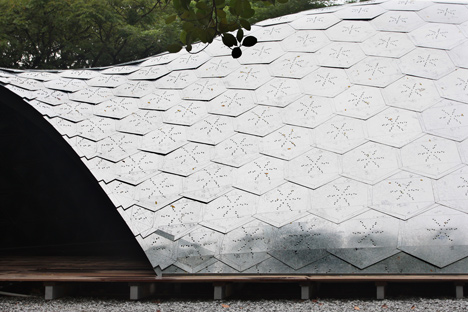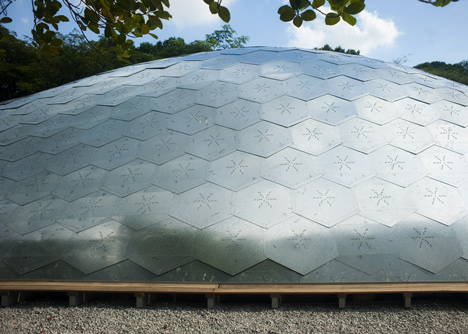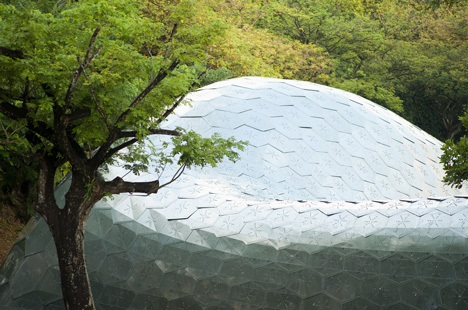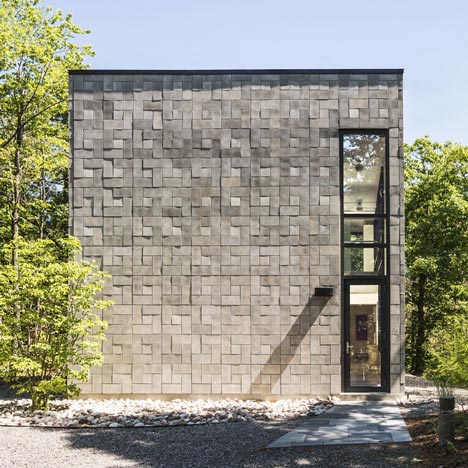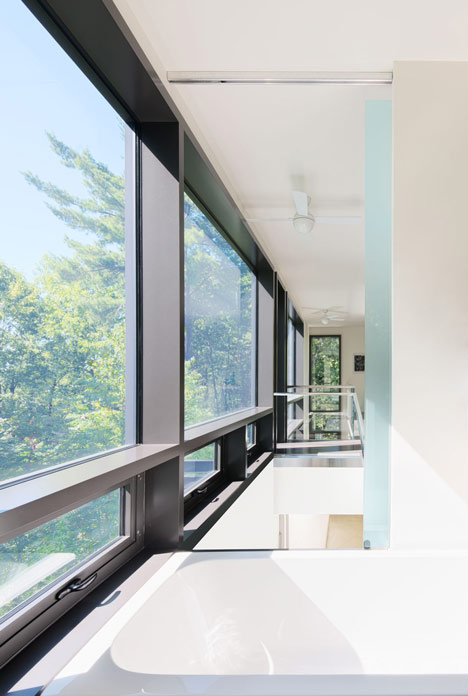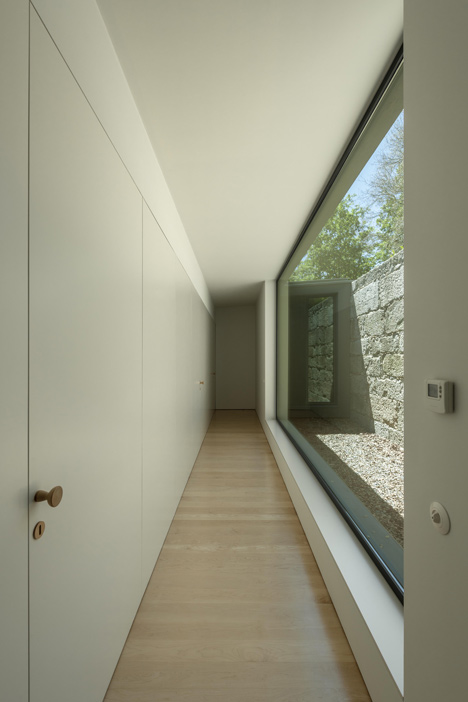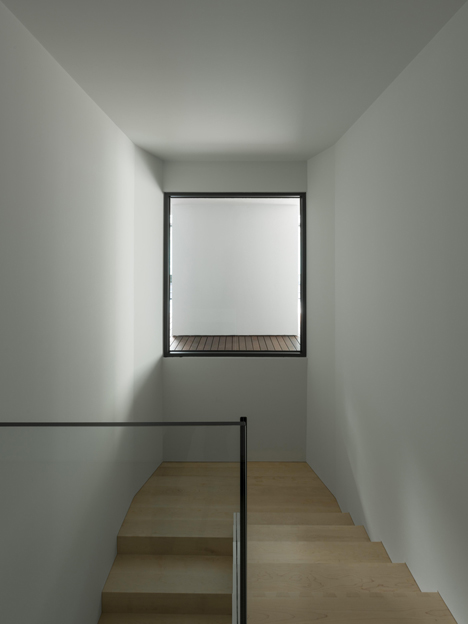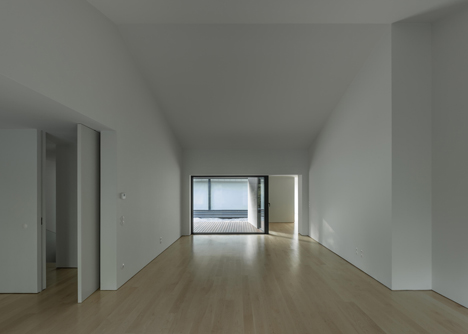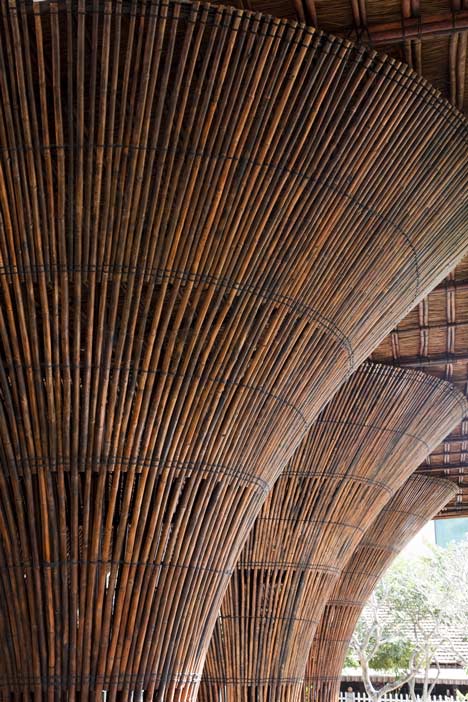Web of Connections: Indian Design education with influences from the HfG Ulm
I was invited to write a reflective piece on the connections between the design pedagogy of the National Institute of Design, Ahmedabad and that of the HfG Ulm to be included in a proposed issue of the Bauhaus Dessau Foundation’s magazine issue that would look back at the impact of the Bauhaus and Hfg Ulm on the Tropical nations of the world long after both these German schools were shut down for different reasons. I have been researching their connections with India for many years and this invitation gave me an opportunity to continue my research a bit deeper into the connections between the schools. I interviewed four former NID faculty who had studied and worked closely with faculty from HfG Ulm in the early 60’s when the NID was being founded at Ahmedabad and used this to build my paper. Interesting new facts were revealed in these interviews and we will need to do more before we have a deeper understanding of the real influences and how these have shaped the foundation of design education in India.
My paper was not carried in the Bauhaus 5 – Tropics issue released in June 2013 but on pages 76 to 79 they carried a brief interview with me about a set of questions that their editors had set for me to respond. However, they have also provided a link to my blog “Design for India” www.designforindia.comand their own website at www.bauhaus-online.de for extracts from my paper that is reproduced below in full text. Image: Paramanand Dalwadi, H Kumar Vyas, Gajanan Upadhayay and Jayanti Panchal — all former Faculty of NID who had close connections with HfG Ulm in the 60’s and later.
Web of Connections: Indian Design education with influences from the HfG Ulm
M P Ranjan
Professor – Design Chair, CEPT University, Ahmedabad
Paper prepared at the invitation of the Bauhaus Dessau foundation for inclusion in "Bauhaus 5 ‑—Tropics" magazine. in June 2013
Prelude
In his 1999 article titled – The “Ulm Model” in the Periphery – Gui Bonsiepe discussed the various manifestations of the “Ulm Model” especially its reach and establishment In India in the process of bringing design education to India. He states – “HfG influences had a part in the founding of the National Institute of Design (NID) at Ahmedabad in India, where HfG faculty members gave guest courses (Hans Gugelot, Herbert Lindinger, Wolfgang Siol, Christian Staub and others). These institutions based themselves in policy, design, curriculum and teaching methods (problem based learning in design courses), on the experience of the HfG. This experience was brought to them through contacts with HfG faculty members, through Ulm alumni who came there to teach, and also through the publications of the HfG, especially the magazine Ulm.” This statement from “Ulm Design” (1999) provided the setting for me to research deeper the connections between HfG Ulm and NID in the early years as well as in contemporary times particularly in the context of the invitation from the Bauhaus Dessau Foundation who are setting up a retrospective of the exhibition that had been shown in Calcutta in 1922 that included works of the Bauhaus of which very little is known here in India in the context of the arrival of modern design and its taking roots here in India. Little is also known about the various connections between the HfG Ulm and NID and I used this occasion to try and correct these lacunae.

Image: HfG Ulm Faculty (from top left clockwise) — 1. Visiting faculty at HfG Ulm and at NID - Charles Eames. 2. Hans Gugelot with architecture students at NID in 1965, 3. Horst Rittel author of "wicked problems" and 4. Tomas Maldonado author of "Design, Nature, Revolution".
I had detailed interviews and video recorded four former NID faculty who had substantial contact with Ulm and Ulm faculty in the 60’s and 70’s and these interviews as well as other resources and information available with me I proceeded to build the final article. I interviewed Kumar Vyas who started the Product Design Programme at NID in 1966 after spending 11 months at Ulm in Gugelot's office in 1965-66, Paramanand Dalwadi who set up the NID Photography Department was a student of Christian Staub at NID in 1963-66 and Wolfgang Siol at Ulm in 1970. Gajanan Upadhayay started the Furniture Design activity at NID and worked with Hans Gugelot during his brief visit in 1965 and finally Jayanti A Panchal who also worked with Hans Gugelot in 1965 on the tangential fan project at NID and later went to Gugelot office in 1970-71 as a product-engineering designer. All of them had intense interactions with Prof Hans Gugelot when he visited NID in 1965. As we know Hans Gugelot passed away in 1965 some time after his return from India but not before he had set up the faculty training exposure programme for Kumar Vyas to undertake at Ulm over 11 months in 1965-66. I also got in touch by phone with Prof Sudha Nadkarni in Mumbai and reviewed his papers for the Ulmer Model Exhibitions in 2010 at Ahmedabad and Bangalore. Sudha Nadkarni studied at HfG Ulm from 1962 to 1966 and came back to India to work at NID 1966 to 1969 and then went on to set up the Industrial Design Centre at IIT Bombay in 1970. Kirit Patel of CEPT University had apprenticed in Frei Otto's studio in the 80's and this interview too provided insights about the approach to design that was followed by one of the prominent guest faculty at HfG Ulm.
Herbert Lindinger in his forward to the book “Ulm Design” tells us that the HfG Ulm had been through six phases of development and before the NID teams interacted with them they had already developed a critical approach to design education and design theory that was well documented and disseminated by the Ulm magazine 1 to 21 from 1955 to 1968. He states – “The third phase, 1956-58, was dominated by the teaching of Otl Aicher, Maldonado, Gugelot and Vordemberge-Gildewart. These instructors tried to build a new and markedly closer relationship between design, science and technology. This was the first manifestation of the Ulmer Modell, the Ulm model, which has lost none of its relevance. The HfG evolved a model of training that aimed to give designers a new, and rather more modest and cautious, understanding of their own role. As design was now to concern itself with more complex things than chairs and lamps, the designer could no longer regard himself, within the industrial and aesthetic process in which he operated, as an artist, a superior being. He must now aim to work as part of a team, involving scientists, research departments, sales people, and technicians, in order to realize his own vision of a socially responsible shaping – Gestaltung – of the environment. Under Maldonado, a new Basic Course came into being, which broke away more and more clearly from Bauhaus concepts and absorbed the lessons of perceptual theory and semiotics.”
The National Institute of Design (NID)
It was this Basic Course that Kumar Vyas understood deeply at Ulm and introduced to the new batch of Product Design students when the Postgraduate course was offered to graduate engineers in 1967. The NID documentation from 1964-69 shows examples of the Basic Design assignments as well as the early projects and the methods used in these projects that echo the Ulm paradigm as well as the muted shades of grey and colours that were a hallmark of the HfG Ulm way. According to him, while the spirit of Ulm may have directed the assignments a lot of innovations were brought into the teaching to meet local needs and challenges. I joined NID as a student in the postgraduate programme in Furniture Design in 1969 and Kumar Vyas, Sudha Nadkarni and Rolf Misol conducted the interview. While the Furniture Design projects that started from day one were formulated by Misol and his teacher and chief consultant, Arno Votler, the Basic Design assignments conducted by Kumar Vyas were the same as those done by the Product Design students. The evening discussions that we had with the Product Design students and those from Graphics and Textiles did show different threads of pedagogy that were being explored at NID by the various departments and each was informed by the specific positions of the selected consultants and visiting faculty who were involved in these programmes. While Product Design was based on Ulm the Graphic Design programme was modeled after the Swiss school at Basel and the Textile Design programme came from Cranbrook and the Scandinavian traditions of weaving. Furniture Design and Ceramic Design had German consultants to set the curriculum and to conduct the early programmes. Arno Vottler and Hans Theo Baumann developed the Furniture Design and Ceramic Design programmes respectively.

Image. H K Vyas conducting class at NID in 1967 and Exhibition at NID of basic design work done in the first Product Design programme in 1969 and GIRNAR scooter designed by H K Vyas and Sudha Nadkarni with J A Panchal in 1969.
NID too had a large number of visiting consultants and guest faculty members in the formative years and many were involved in project work where students actively participated. The first of a string of major exhibition and multidisciplinary projects was the designing of the Nehru Exhibition and in 1964 the entire team of faculty and students in the Graphic Design and Architecture programmes were involved with the team from Eames Office and this helped set up a very vibrant work culture at the new Institute located in a building that was designed by Le Corbusier where NID had access to the loft spaces which had been suitably modified to start the school of design and host its activities till the new building was made ready across the street at Paldi in Ahmedabad. Gautam and Gira Sarabhai with their vast network of contacts in the art and design community worldwide were able to attract the best talent available to Ahmedabad and with the generous grants from the Ford and Rockefeller Foundations the talent pool, that they assembled reads like a who’s who of world design and the students and faculty were exposed to these ideas and work methods. This procession of international talent continued well into the late 80’s with the support of the development grants from the United Nations Industrial Development Organisation (UNIDO). The first UNIDO- ICSID conference on Design for Development was held at NID Paldi campus and at IDC in Mumbai in 1979 and amongst the speakers were Victor Papanek and Gui Bonsiepe along with designers from Europe, Asia and Latin America. I mention this here since NID had been evolving internally as well towards development oriented design action and there was much discussion at the Institute on what would be an appropriate of design action for a country like India and these debates continued to impact the education programmes at the Institute over the years.
Hans Gugelot and Product Deign
For the formulation of the Product Design programme Kumar Vyas was asked by Gautam and Gira Sarabhai to stop by at HfG Ulm in early 1965 on his way back from the opening ceremony of the Eames designed Nehru Exhibition that opened in New York. This halt at the HfG Ulm turned out to be quite significant for the NID’s Product Design programme. Kumar Vyas met Hans Gugelot there and it was agreed that Gugelot would travel to India and help in the formulation of the new programme for the NID. Gugelot traveled to India in the summer of that year and spent a little over two weeks working with NID designers and craftsmen to develop the new pedestal model of the tangential fan with Kumar Vyas and Jayanti A Panchal and with Gajanan Upadhayay a range of furniture using wooden strips in a T section arrangement and canvas and plywood strips inserts for stiffness. The model making for the tangential fan was made by the legendary Haribhai, a Guajarati craftsman and carpenter of fine skills and an amazing ability to make models in a wide range of materials, plastics, metals and woods. The wooden furniture system was detailed and developed by Gajanan Upadhayay and he made the full set of scale models as well as the prototypes himself. Gugelot returned to Ulm but passed away before Kumar Vyas could commence his planned training programme at his office in Ulm. Kumar Vyas did however travel to Ulm and work under the guidance of Herbert Lindinger at HfG Ulm and Horst Diener at the Gugelot office where he spent the next ten months understanding the Ulm approach to design education and practice. He also met and befriended Sudha Nadkarni at HfG Ulm and this set the stage for the next level of partnership since Nadkarni joined NID as a faculty and designer and worked there from 1966 to 1969 before moving to Bombay to set up the IDC as part of IIT Bombay. Jayanti A Panchal traveled to Ulm in 1974 to work in Gugelot’s office under E Reichl and Horst Diener and during this period worked on many ongoing projects of the office as a design engineer.
Christian Staub and Wolfgang Siol – Photography at NID
Photography Department at NID was set up by Christian Staub who lived in Ahmedabad for three years and trained the early students at NID including Paramanand Dalwadi who became the main photography faculty at NID after his period of training at NID under the mentorship of Christian Staub. Dalwadi recalls that period with warmth and deep respect for his classical perfection in his work. Staub introduced Dalwadi to the finer aspects of photography, camera work as well as lab and darkroom techniques and in his own words gave him confidence to teach the subject as well as carry out complex professional tasks in studio and architectural photography using various formats that were available at NID. The assignments were all refined at HfG Ulm these formed the basis of teaching at NID as well. In 1969-70, Dalwadi was deputed for training at Ulm under Wolfgang Siol for four months and there he had complete access to the equipment in the studio although he arrived as an apprentice from India. This gave Dalwadi insights into the Ulm classic techniques of “isometric photography” that was achieved by perspective correction and appropriate camera position in relation to the subject, unwritten rules of composition learned by practice and attention to detail. He had another occasion in 1974 to return to Siol’s studio and spend one month there to be immersed in the studio practice as a refresher dose. Dalwadi had joined NID as a student in 1963 and he started teaching at NID and built his own reputation as one of India’s leading photographer and teacher.
Guest Teachers at HfG Ulm and at NID
Herbert Lindinger tells us – “The HfG was planned as a place for experiment, an institution open to new hypotheses, theories, and development, in itself the enormous preponderance of guest instructors (around 200) as opposed to permanent faculty members (20) led to a sustained dynamic, a constant state of mental unrest. The list of those guest instructors, then still young and largely unknown, now looks like a Who’s Who of science, literature and art.” Lindinger visited NID in 1970 to review the new curriculum for the undergraduate programme that was started then.
Klaus Krippendorff whom I met at the IDSA conference in 2006 writes about his experiences at Ulm where the visiting lecturers and faculty included Charles and Ray Eames (1955 and 1958), Buckminister Fuller, Bruce Archer and Horst Rittel, his favorite teachers. Krippendorff’s paper of 2008 states – “The school seemed to look for students who connected intellectual, cultural, political and technological conceptions and willing to act.” He also has a comment on the politics of the HfG Ulm and he states – “Perhaps the lack of appreciation of the virtues of higher education by the design faculty explains at least part of its shortsighted politics.” This seems to be true of NID as well as other design schools in India where a lack of scholarship and publication is sometimes seen as a virtue.
In later years both NID and IDC managed to obtain UNDP funding and faculty from both schools revisited contacts from HfG Ulm as pert of their training programmes and guest faculty from HfG Ulm also came to India as UNDP consultants to bring a renewed level of exchange between these organisations. Detailing these will need additional research that I hope will be done in the near future by Indian as well as German scholars. These experts include Kohei Suguira from Tokyo, Herbert Ohl, Herbert Lindinger, and Gui Bonsiepe. I also had a conversation with my colleague, Kirit Patel at CEPT University to explore his contacts with Frei Otto and his team at IL, Stuttgart. Frei Otto was an active guest faculty
The Ulm Journals at NID Library
Tomas Maldonado and Gui Bonsiepe provided intellectual leadership to several generations of Indian students as well as faculty at both NID as well as IDC through their sustained efforts to publish the HfG Ulm Journals and books in later years that were followed with awe and respect. NID Library had a bound volume of these and many of the assignments documented here were also followed explicitly at NID as well as at IDC over the years. For instance in Ulm Journal 10-11, Maldonado and Bonsiepe argue for a unique position for design and design thinking in a world dominated by science. This is a position that we are still to resolve and in my view an important debate that will continue to attract research attention for years to come. I met Bonsiepe on his several visits to India and also Maldonado when I made a visit to Milan in 2010 and I interviewed him on a number of research questions that I had in mind that stemmed from his perceptive writings.

Image. Look Back Look Forward workshops were conducted at Bangalore and Kolkatta in 2010 to accompany the traveling exhibition of the HfG Ulm work and design pedagogy. These workshops looked at the impact of HfG Ulm on design pedagogy in India and at basic design education in particular. Prof M P Ranjan (sitting on the Ulmer Stool) chaired the two conferences along with Suchitra Balasubramanian, Prof Sudha Nadkarni and Prof Kumar Vyas (seen above) were keynote speakers at the Bangalore event while Prof Kirti Trivedi delivered the keynote at Kolkatta.
In 1994 Kirti Trivedi of IDC approached me at NID to obtain Xerox copies of Ulm Journals in the NID Library. He used these as a backdrop for the conference at IDC, “Ulm and After” and selected papers were reproduced in a book for the benefit of Indian teachers for the first time. In 2010, NID in collaboration with the Ulm Archives and the Max Muller Bhavan hosted the traveling exhibit at Ahmedabad and later at Bangalore and Kolkatta. I organized the conferences titled Look Back Look Forward: HfG Ulm and Design Education in India at Bangalore and another on Basic Design at Kolkatta and we released a digital set of the Ulm Journals for Indian academics for the first time and since then these have been available for a wider audience. The impact of these Ulm Journals on design education is still unfolding and they will be in active use for many years to come I am sure.
Further Research Questions
Science and Design article raises many research questions about the nature of design and science that are still active in our debates on various online discussion lists to this day. HfG Ulm had raised these in their corridors and these questions still reverberate in our minds. The HfG Ulm is a rare case of design thought and action that was both intense and comprehensive and the various threads that started there may need to be followed up by current day researchers to build a body of scholarship that will help put design at a new level of acceptance in India and elsewhere. One wonders what discussion Eames had the HfG in 1955 and 1958 and what impact if any it had on the Eames Report of 1958.
I also wonder what roles Guest Faculty could play in Design schools of the future, particularly in the transmission of knowledge and cross fertilization of ideology and techniques that seems to get lost in the implementation of narrow curriculum that is being attempted here in India in an effort to expand the reach of design education without adequate research. I believe that the seeds of these questions and their answers lie in the archives and memories of Ulmers, NIDians, IDCians and others and this need to be researched urgently. I traveled to Ulm in 2005 at the invitation of Rene Spitz to be part of the round table organized there. I followed this with another visit in 2008 when I had a memorable experience of staying at the HfG Ulm campus in a faculty studio thanks to the hospitality of Nick Roerich and the Ulm Archives and I hope more researchers will explore this rich space to appreciate design and shape the education of the designer of the future. The Max Bill building of 1953 is still in pristine condition and the Ulm Archives has now moved back to the campus and this bodes well for future research on the people and activities at HfG Ulm that has had such a huge impact on the world of design education.
References
01. Charles and Ray Eames, The India Report, Government of India, New Delhi, 1958, reprint, National Institute of Design, Ahmedabad, 1958, 1997
02. Thomas Maldonado, Gui Bonsiepe, Renate Kietzmann et al., eds, “Ulm (1 to 21): Journal of the Hoschule fur Gestaltung”, Hoschule fur Gestaltung, Ulm, 1958 to 1968
03. Hans M. Wingler, The Bauhaus: Weimer, Dessau, Berlin, Chicago, The MIT Press, Cambridge, Mass., 1969
04. Tomas Maldonado, Design, Nature, and Revolution: Toward a Critical Ecology, Harper & Row, New York, 1972
05. Victor Papanek, Design for the Real World, Thames & Hudson Ltd., London, 1972
06. Stafford Beer, Platform for Change, John Wiley & Sons, London, 1975
07. Frei Otto, IL20 TASKS, Institute for Lightweight Structures, Stutgart, 1975
08. R Buckminster Fuller, Critical Path, St. Martin's Griffin; 2nd edition, New York, 1982
09. Gui Bonsiepe, Estrutura e Estetica do Produto, Centro de Aperfeicoamento de Docentes de Desenho Industrial, Brasilia, 1986
10. Herbert Lindinger, Hoschule fur Gestaltung - Ulm, Die Moral der Gegenstande, Berlin, 1987
11. Kirti Trivedi ed., Readings from Ulm, Industrial Design Centre, Bombay, 1989
12. Otl Aicher, the world as design, Ernst & Sohn, Berlin, 1991
13. Otl Aicher, Analogous and Digital, Ernst & Sohn, Berlin, 1994
14. Gui Bonsiepe, Interface: An approach to Design, Jan van Eyck Akademie, Maastricht, 1999
15. Herbert Lindinger, Eds., Ulm Design: The Morality of Objects, Hoschule fur Gestaltung – 1953 – 1968, MIT Press, Cambridge, Mass., 1999.
16. Rene Spitz, HfG Ulm: The View Behind the Foreground – The Political History of the Ulm School of Design –1953-1968, Edition Axel Menges, Stuttgart/London, 2002
17. Martin Krampen & Gunther Hormann, The Ulm School of Design – Beginnings of a Project of Unyielding Modernity, Ernst & Sohn, Berlin, 2003
18. Klaus Krippendorff, The Semantic Turn: A New Foundation for Design, Taylor & Francis CRC, New York, 2006
19. M P Ranjan, Lessons from Bauhaus, Ulm and NID: Role of Basic Design in PG Education, in proceedings of DETM Conference, NID, Ahmedabad, 2006
21. Klaus Krippendorff, Designing in Ulm and Off Ulm, University of Pennsylvania, 2008
About the Author
M P Ranjan
Professor – Design Chair, CEPT University
Ahmedabad
Prof M P Ranjan is a design thinker with 40 years of experience in design education and practice in association with the National Institute of Design. He helped visualize and set up two new design schools in India, one for the crafts sector, the IICD Jaipur and the other for the bamboo sector, the BCDI Agartala. His book Handmade in India is a comprehensive resource on the hand crafts sector of India and was created as a platform for the building of a vibrant creative economy based on the crafts skills and resources identified therein.
His book on bamboo opened up new frontiers for design exploration in India. He has explored bamboo as a designer material for social transformation. Bamboo has been positioned as a sustainable material of the future through his work spread over three decades. His work in design education covered many subjects including Design Thinking, Data Visualisation, Interaction Design and Systems Design
His blog “Designfor India” has become a major platform for Indian design discourse. http://www.design-for-india.blogspot.com
He is on the Governing Council of the IICD, Jaipur and advises other design schools in India and abroad. He lives and works from Ahmedabad in India. He has been acknowledged by peers as one of the international thought leaders in Design Thinking today
~

























